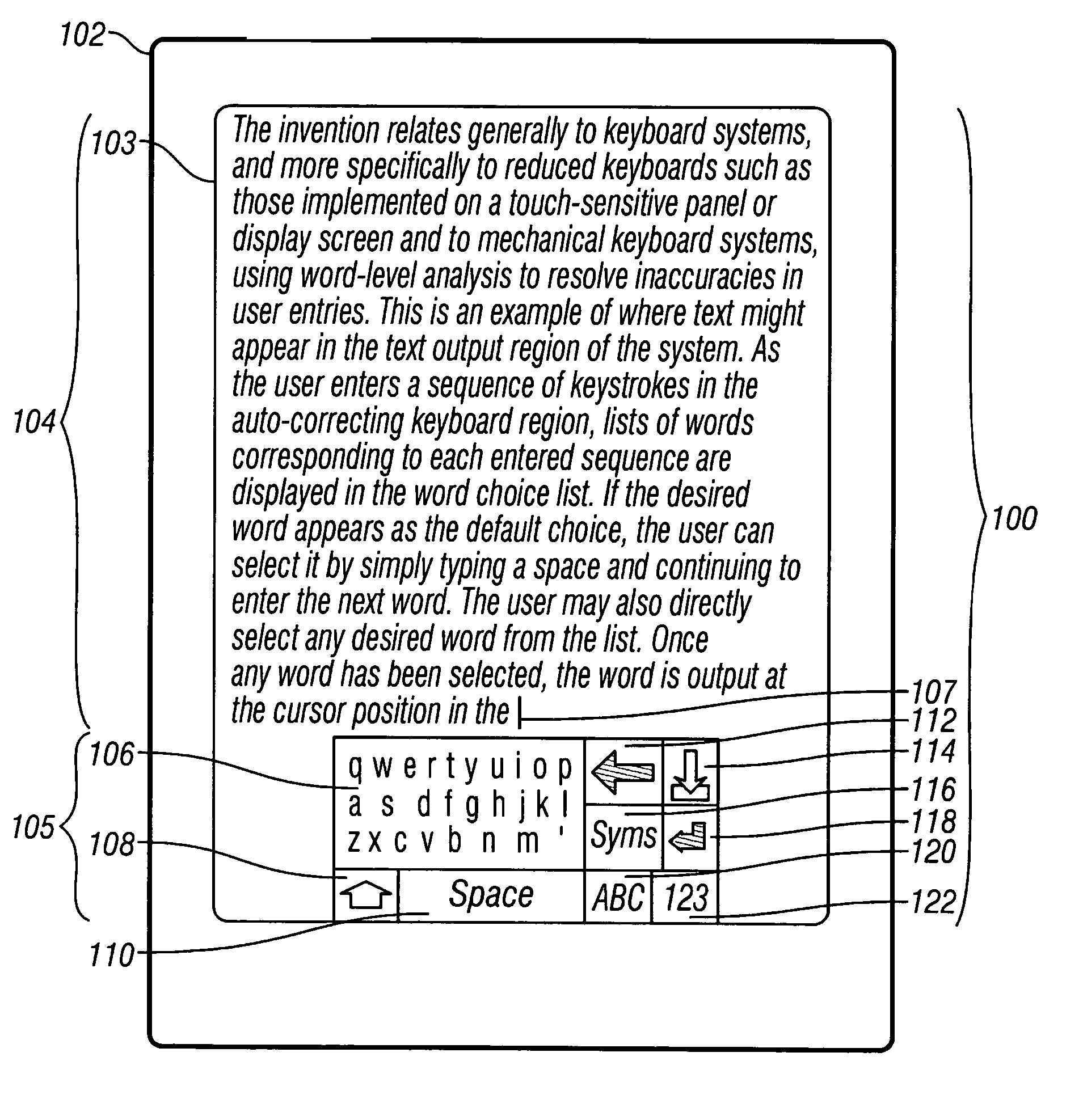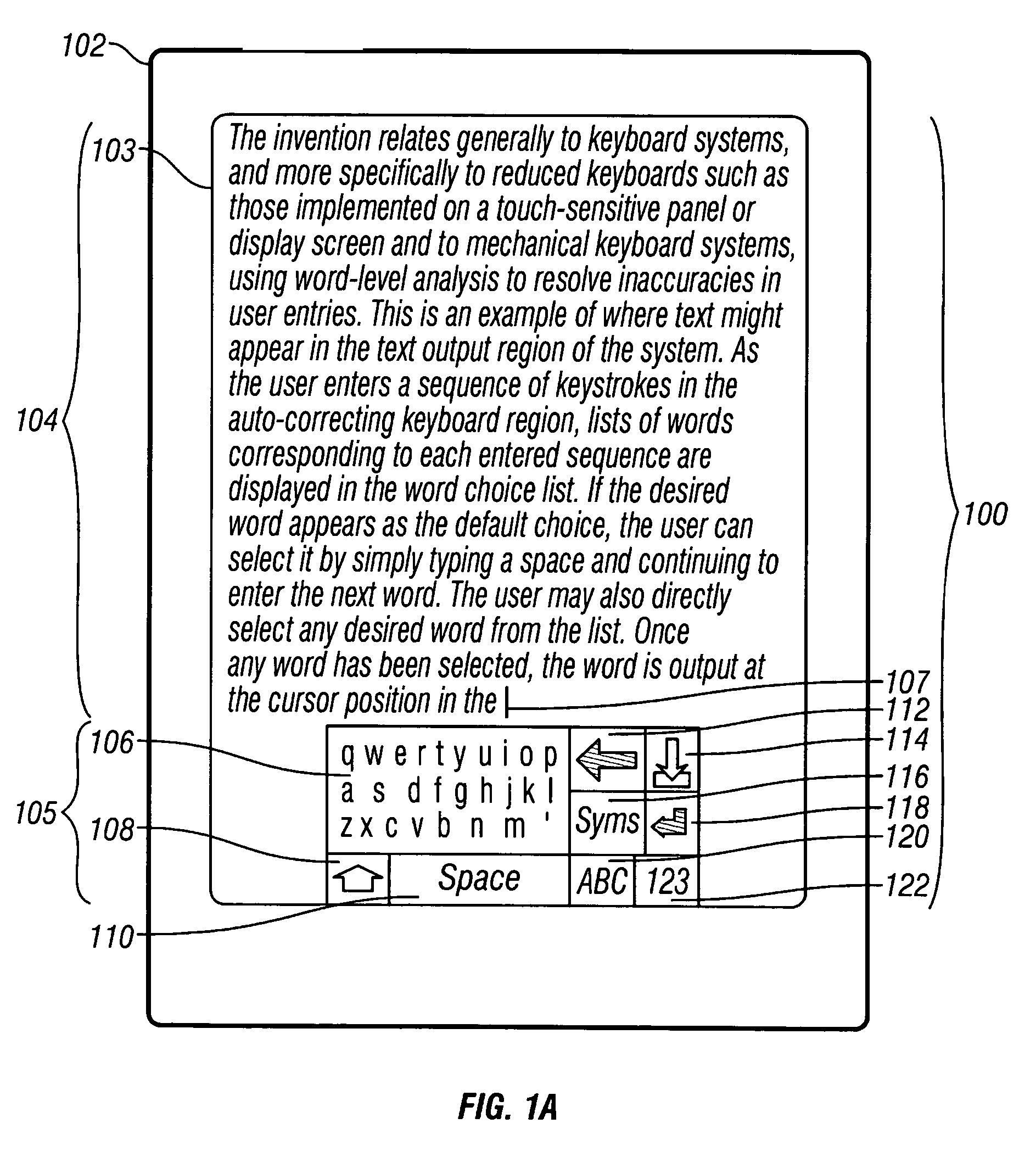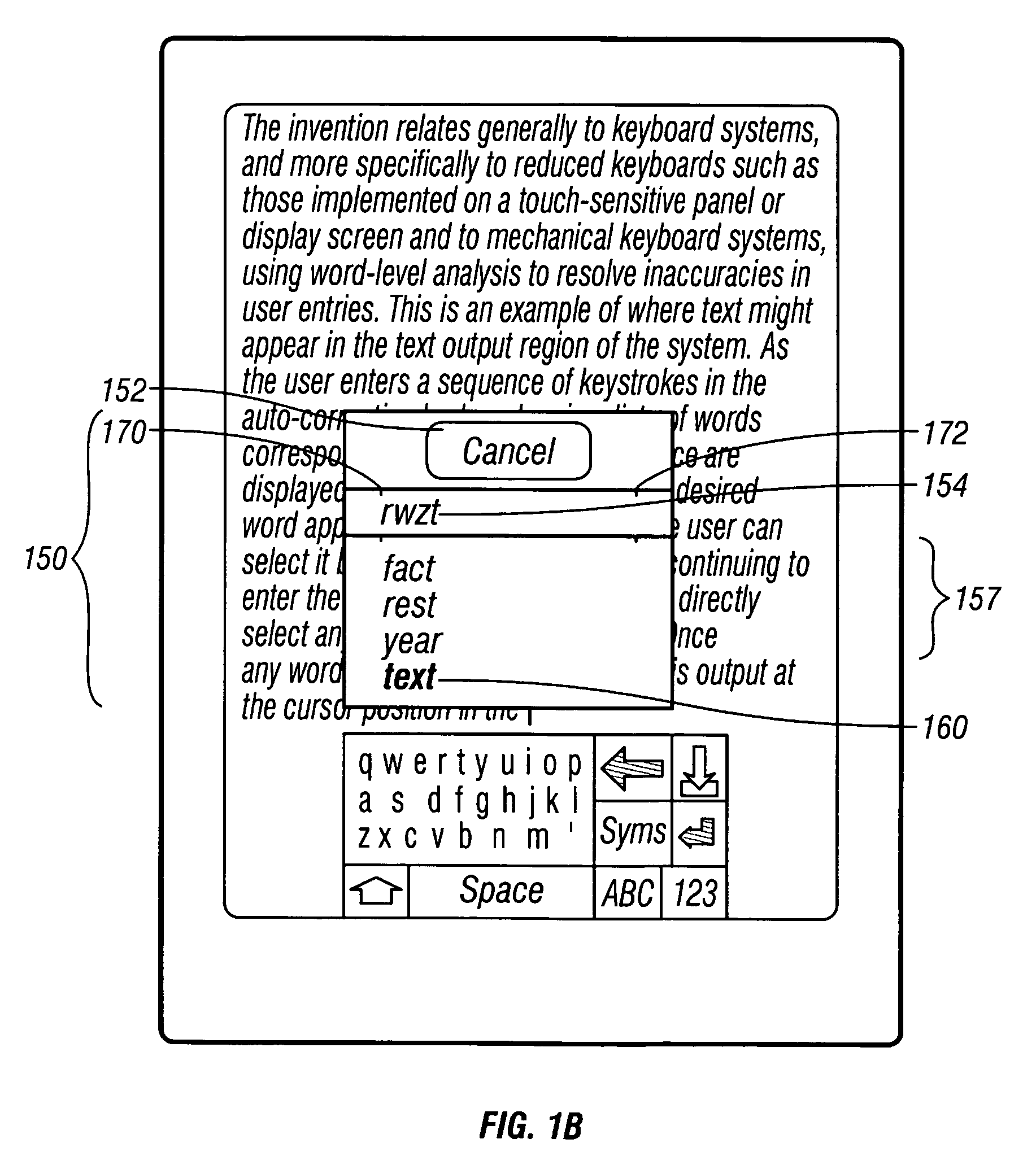Virtual keyboard system with automatic correction
a keyboard and virtual keyboard technology, applied in the field of virtual keyboards, can solve the problems of inability to easily or quickly manipulate the miniature keyboard keys with sufficient accuracy by a user, and the size-limiting component in the effort to produce a smaller portable computer has been the keyboard
- Summary
- Abstract
- Description
- Claims
- Application Information
AI Technical Summary
Benefits of technology
Problems solved by technology
Method used
Image
Examples
Embodiment Construction
[0146]Because user keystroke entries are presumed to be possibly inaccurate, there is some ambiguity as to how a particular sequence of keystrokes should be interpreted to generate the sequence of characters that the user intended to type. The invention provides a process and system, i.e. an apparatus or device, wherein the user is presented with one or more alternate interpretations of each keystroke sequence corresponding to a word such that the user can easily select the desired interpretation, and wherein no special action need be taken to select the interpretation deemed most likely. This approach enables the system to use the information contained in the entire sequence of keystrokes corresponding to a word in resolving what the user's likely intention was for each character of the sequence.
[0147]The method of the present invention has two very significant advantages over prior systems, such as that disclosed by U.S. Pat. No. 5,748,512. One is that the inventive system uses in...
PUM
 Login to View More
Login to View More Abstract
Description
Claims
Application Information
 Login to View More
Login to View More - R&D
- Intellectual Property
- Life Sciences
- Materials
- Tech Scout
- Unparalleled Data Quality
- Higher Quality Content
- 60% Fewer Hallucinations
Browse by: Latest US Patents, China's latest patents, Technical Efficacy Thesaurus, Application Domain, Technology Topic, Popular Technical Reports.
© 2025 PatSnap. All rights reserved.Legal|Privacy policy|Modern Slavery Act Transparency Statement|Sitemap|About US| Contact US: help@patsnap.com



